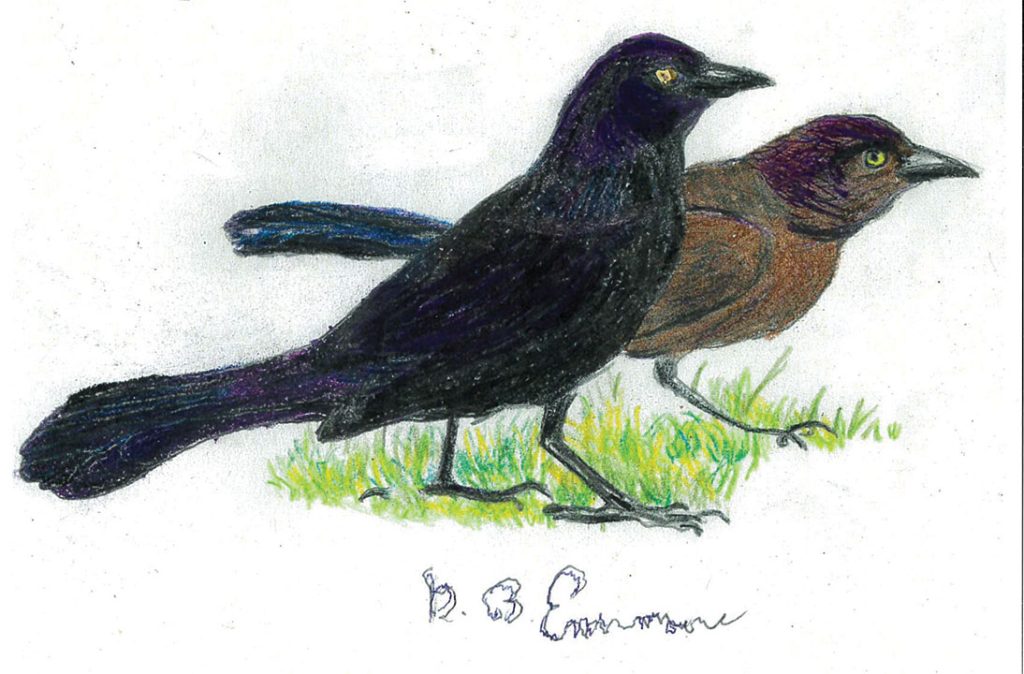The best way to tell if the unwanted Grackles are invading your backyard is to check on flocks of blackbirds and starlings already there making a nuisance of themselves.
The tallest with the longest tails among them will turn out to be Grackles, with their purple, shiny heads in sharp contrast with bronze, iridescent bodies. Their bright, golden yellow gives them an intense expression with an intrusive and detrimental purpose in mind.
In my illustration, mated Grackles usually look for birdseed thinly scattered on the ground to make it look like a free-for-all to all comers. They often try to steal food from Robins as well as many other smaller birds. They have already been seen on my place, killing an adult House Sparrow and have a reputation of being bullies around groups of other, smaller birds.
Occasionally, they will make a nest in the lower level of the Osprey wooden towers along the shoreline of Fairhaven.
Both parents feed their four fledglings’ insects, beetle grubs, grasshoppers, millipedes, spiders, minnows and tadpoles. They also have been attracted to eating large quantities of ants from their parents, who by digesting large quantities in front of them are secreting medicinal formic acids into their stingers to help Grackles get rid of crawling parasites infecting their inner plumage.
The fledglings are soon-enough ready to forage for themselves in preparation for the end of summer, seasonal migration down south.
At that time, Grackles forage together and roost in large, communal flocks with several different species of other black birds. These gatherings can number many hundreds of individuals, as they keep gathering numbers in preparation for the coming of winter weather.
On the way, they pass over large, country corn fields, and they are named in passing to be scarecrows because they become the number-one threat to growing corn. They can have a million-dollar impact on farming agriculture and when they leave, they are finally appreciated.
The oldest Grackle recorded still around was a solitary male kept alive until it was at least 21 years old when it was killed by a raptor predator. Now, with the climate change of glacial warming, the intrusion of Grackles cannot be reasonably predicted because of the seasonal variation of similar, habitual, predation species.
By George B. Emmons

How does one rid himself from Crackles?